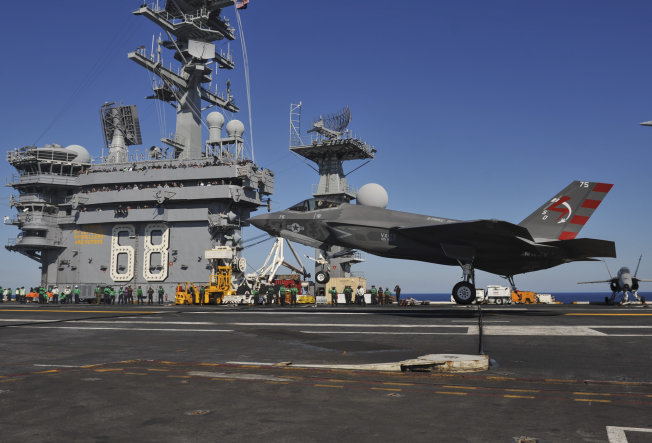On the last day of July, the Marine Corps declared its variant of the F-35 Joint Strike Fighter had reached the milestone known as “initial operational capability.”
It’s important to understand what that really means and what it doesn’t. So let’s turn to that great beach read, “Joint Publication 1-02: Department of Defense Dictionary of Military and Associated Terms.” This weighty tome tells us initial operation capability indicates “the first attainment of the capability to employ effectively a weapon, item of equipment, or system of approved specific characteristics that is manned or operated by an adequately trained, equipped, and supported military unit or force.” 
But what it does not mean is that the F-35 is fully operational. That is defined as the point “when all units and/or organizations in the force structure scheduled to receive a system have received it and have the ability to employ and maintain it.”
The first squadron to receive these minimally effective aircraft is in Yuma, Arizona. So Republican Sen. John McCain, who both represents Arizona and is chairman of the Senate Armed Services Committee, has to walk a careful line in his statements about the F-35. In 2013, he referred to the repeated cost overruns of the F-35 program as “worse than a disgrace,” but soon the F-35 will replace the F-18s currently flying out of the Marine base at Yuma. To his credit, he continues to raise his concerns, “about the capability and reliability this (sic) aircraft.” He goes on to say, “The Joint Strike Fighter is the most expensive weapons system in history, and we must learn the lessons of past failures to ensure that taxpayer dollars are spent efficiently and American aviators can safely and effectively perform their missions.”
I couldn’t agree more. There is ample evidence of the massive, and growing, cost of the F-35. In April of this year the Government Accountability Office released a new report on the long term costs of the F-35. Here is a summary of the forthright GAO review but this excerpt sums up the concerns:
Saying the current plan, “may not be affordable” is putting it mildly. The long-term sustainment costs of F-35 have been pegged by GAO at roughly $1 trillion. Think about that for a moment. It’s hard to wrap your mind around something costing a trillion dollars. And as good as the GAO is at costing these things out, I have no doubt this estimate will continue to creep upward. Can the Pentagon afford such a massive investment, for a plane designed to be in the inventory for at least 40 years, when the nature of warfare in 2025, much less 2055 is unknowable?
I certainly hope this initial operational capability designation doesn’t mean the Pentagon believes the F-35 is now eligible for Overseas Contingency Operations funding. The Marines asked to reprogramunspent contingency operations funds at the end of the last fiscal year to buy more F-35s. Thankfully, the U.S. House Appropriations Committee forcefully shut that down. But initial operational capability and Overseas Contingency Operations share one common root word: “operations.” People who care about fiscal sanity and sound budget practices should be watching for this.










